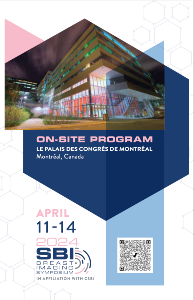The Allergic Breast Imaging Patient: What to do when they arrive in your department.
ePosters
- CM
Carol McLaughlin, MD
Assistant Professor of Radiology; Program Director of Breast Imaging Fellowship
University of Michigan
Presenter(s)
Background: Patients with allergies undergoing breast imaging or biopsy present unique challenges for breast imagers, both clinically and logistically. Allergens encountered in the breast imaging patient include iodinated and gadolinium-based contrast agents, lidocaine, nickel, skin cleansers, adhesives, and more. Identifying, managing, and navigating these allergies is crucial to ensure patient safety and the success of the imaging study and/or image-guided procedure. The purpose of this educational exhibit is to offer providers a comprehensive toolkit for the identification of allergens, alternative approaches, and best practices for ensuring the well-being of patients with allergies in breast imaging and biopsy settings.
Learning Objectives: 1) Recognize the relevant allergies that patients may present with when undergoing diagnostic breast imaging and image-guided procedure.
2) Understand the implications of these allergies on patient safety, image quality, and procedure success.
3) Explore alternative approaches when performing diagnostic breast imaging or image-guided procedures in patients with relevant allergies.
Abstract Content/Results: This abstract will integrate real-life patient cases of allergies encountered in the breast imaging clinic, a literature review of alternative materials and approaches to minimize allergic reactions, and radiology images when relevant. The exhibit will tackle allergens one-by-one with brief digestible management strategies listed for each. There will be a comprehensive table with the discussed allergies with guidelines for alternative management options to offer radiologists a toolkit for navigating these clinical scenarios in the future.
Conclusion: This educational abstract will equip radiologists with the knowledge and tools necessary to address allergies in patients undergoing breast imaging or image-guided procedures. By identifying the commonly encountered allergies and presenting alternative management options, individuals who view this abstract will be better prepared when confronted with the allergic patient in breast imaging. This abstract aims to improve patient safety and the quality of care for patients undergoing breast imaging.
Learning Objectives: 1) Recognize the relevant allergies that patients may present with when undergoing diagnostic breast imaging and image-guided procedure.
2) Understand the implications of these allergies on patient safety, image quality, and procedure success.
3) Explore alternative approaches when performing diagnostic breast imaging or image-guided procedures in patients with relevant allergies.
Abstract Content/Results: This abstract will integrate real-life patient cases of allergies encountered in the breast imaging clinic, a literature review of alternative materials and approaches to minimize allergic reactions, and radiology images when relevant. The exhibit will tackle allergens one-by-one with brief digestible management strategies listed for each. There will be a comprehensive table with the discussed allergies with guidelines for alternative management options to offer radiologists a toolkit for navigating these clinical scenarios in the future.
Conclusion: This educational abstract will equip radiologists with the knowledge and tools necessary to address allergies in patients undergoing breast imaging or image-guided procedures. By identifying the commonly encountered allergies and presenting alternative management options, individuals who view this abstract will be better prepared when confronted with the allergic patient in breast imaging. This abstract aims to improve patient safety and the quality of care for patients undergoing breast imaging.

